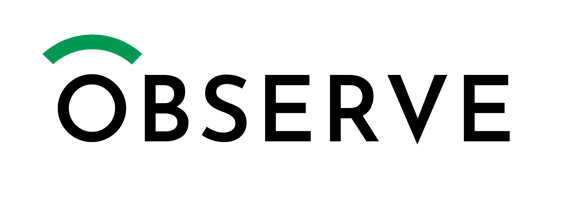
Overview
Honeycomb is an observability platform for cloud native apps that gives you high-level data regarding how your services are performing, combined with the ability to drill down all the way to the individual user level to troubleshoot issues without having to hop across different data types to piece the data together.
Traditionally, when debugging production incidents with dashboards and metrics, it is difficult to drill down beyond aggregate measures. For example, a graph with error rates can't tell you which exact customers are experiencing the most errors. Logs can show you the raw error data, but it's hard to see the bigger patterns unless you know exactly where to look.
Honeycomb's event-based telemetry model and its powerful query engine make it possible to slice your data across billions of rows and thousands of fields to find hidden patterns. The ability to quickly get results means teams can resolve incidents faster and figure out where to make system optimizations.
Teams using Honeycomb ship faster, have faster MTTR, happier customers and less alert fatigue and burnout.
For custom pricing, EULA, or a private contract, please contact AWS-Marketplace@honeycomb.io for a private offer.
Highlights
- Faster Incident Response. Quickly locate sources of problems across complex applications. Use distributed tracing to find issues buried deeply within your stack.
- Treat Performance Like a Feature. Slow is the new down. Honeycomb is designed to help teams make smart investments in optimizing performance for better user experiences.
- Release Features Faster. Unknown unknowns in production make teams fear deploying. Honeycomb helps you understand production in ways that others simply chalk up as unknowable. With Honeycomb you ship more features faster, with fewer failures.
Details
Introducing multi-product solutions
You can now purchase comprehensive solutions tailored to use cases and industries.

Features and programs
Financing for AWS Marketplace purchases

Pricing
Dimension | Description | Cost/12 months |
|---|---|---|
Honeycomb | Honeycomb AWS Marketplace Public Listing | $50,000.00 |
Vendor refund policy
Please contact sales.
Custom pricing options
How can we make this page better?

Legal
Vendor terms and conditions
Content disclaimer
Delivery details
Software as a Service (SaaS)
SaaS delivers cloud-based software applications directly to customers over the internet. You can access these applications through a subscription model. You will pay recurring monthly usage fees through your AWS bill, while AWS handles deployment and infrastructure management, ensuring scalability, reliability, and seamless integration with other AWS services.
Resources
Vendor resources
Support
Vendor support
https://docs.honeycomb.io/ or https://www.honeycomb.io/support/ Contact us here
AWS infrastructure support
AWS Support is a one-on-one, fast-response support channel that is staffed 24x7x365 with experienced and technical support engineers. The service helps customers of all sizes and technical abilities to successfully utilize the products and features provided by Amazon Web Services.



Standard contract
Customer reviews
Its pattern-matching and code transformation capabilities can be adapted for mass identification and remediation of vulnerable libraries
What is our primary use case?
Although Grit is a tool code code migration and management of technical debt for large chunks of work, we reviewed Grit from the use case of assisting in faster remediation of vulnerable libraries. We examined 3 areas and how we could use the synergy of Grit.io along with Snyk .io that helps overcome Snyk 's limitations:
1. Deep scanning and reachability analysis
2. Management of auto-generated Pull Requests (PRs)
3. Reduction of false positives
I'm connected and had interactions with the founder Mr. Morgante Pell, while I designed a comprehensive synergistic solution, and I wrote a 35+ page technical paper on this topic.
How has it helped my organization?
Large organizations with hundreds of development teams and tens of thousands of code repositories face challenges in efficiently identifying and remediating potential vulnerabilities within third-party libraries across numerous projects. Manual scanning and updating is time-consuming, error-prone, and can lead to delays in addressing security risks.
While Grit.io is not primarily a vulnerability scanner, its pattern-matching and code transformation capabilities can be adapted for mass identification and remediation of vulnerable libraries.
For each of these 3 areas listed above, we examined how Grit.io's unique features can complement Snyk.io's capabilities, resulting in a more robust and efficient security scanning process. We realize This synergistic approach addresses the limitations of relying solely on Snyk.io, resulting in improved code security and reduced risk of overlooking critical vulnerabilities.
The limitations of security scanning tools like Snyk.io represent real challenges faced by development teams on a daily basis. These limitations can lead to:
- Missed vulnerabilities in complex code structures
- Overwhelming numbers of auto-generated PRs, causing developer fatigue
- High rates of false positives, leading to wasted time and resources
We considered implementing Grit into our pipelines to address these specific scenarios for code security, though Grit isn't a security tool:
- Custom Rules and Pattern Creation
- Remediation Pattern Creation
- Automated Code Updates
- Custom Pattern Recognition
- Pull Request Generation
- and others
What is most valuable?
1. Grit.io's flexibility allows for custom rules and patterns to identify vulnerable libraries, extending its use beyond traditional refactoring tasks.
2. Automated pull requests streamline the remediation process, facilitating efficient mass updates across multiple repositories.
3. While not a replacement for dedicated security tools, Grit.io can be a valuable addition to a large organization's security toolkit for vulnerability identification and remediation.
4. The approach offers significant benefits in terms of efficiency, consistency, and proactive security management, particularly valuable for organizations with large, distributed development teams.
What needs improvement?
I asked very specific questions to Mr. Pell about consideration of code security scenarios in pattern design and rules, specifically that tuned with OWASP Top 10. I believe addition of code security focus can be a value-add, though the way Grit architecture is designed and how it works, it is and may not become an alternative choice of code security solutions. Rather, it must be treated as a powerful supplementary tool that augments the existing code security solutions (such as Snyk or Checkmarx) in a DevSecOps or Secure DevOps environment.
Anyone interested in learning more on this front or have queries, can get in touch with me for a consulting.
For how long have I used the solution?
Our internal comprehensive evaluation of Grit spans over 6 months to a year since our client organization considered Grit under the Accelerator program of promising AI startups back in Sep 2023. Different phases of the implementation have been conducted by various development architects spanning several scenarios. Our scenario was very specific to how Grit's AI-powered capabilities could be leveraged on code security remediations for a large tech ecosystem.
Easy to use and the dashboard is very intuitive
What is our primary use case?
The solution is mainly used for stack observability. It observes service behavior or any kind of failure that may be happening. The tool is also related to research. My company is working more on this, but I have been working on my SLOs and defining SLOs for the last seven months.
What is most valuable?
The solution's most valuable features are the queries for the OpenTelemetry events and all the tracing. The solution is very easy to use, and the dashboard is very intuitive.
What needs improvement?
We faced some OpenTelemetry metrics lost between the communication from the service and the Honeycomb.io. I can't say if this is a Honeycomb.io issue or if there are some limitations in OpenTelemetry.
Alerts are very helpful in Honeycomb.io, but we don't usually merge because we can compare queries with queries for making alerts. We can make alerts based on static numbers, which may block us from building alerts that could be generic enough or could be serviced.
For how long have I used the solution?
I have been using Honeycomb.io for two years.
What do I think about the stability of the solution?
We’ve never had any issues with the solution’s stability.
What do I think about the scalability of the solution?
Honeycomb.io is a scalable solution. The service is very resilient and can handle a lot of data. The quantity of data Honeycomb.io can parse and use to create charts is really good. More than 100 users are using the solution in our tech team.
I rate the solution’s scalability an eight or nine out of ten.
How was the initial setup?
The solution's initial setup is easy. I think the hardest part is to understand OpenTelemetry in general.
What other advice do I have?
We set up Honeycomb.io on all the services so that we can have all the set traces of the communication between all the services inside the company. This helps us understand where it could be failing, which in turn helps with failures and observability.
When we are not thinking about one specific failure but a major one, we can create queries for statistics views like the P99 or P95 behaviors. That's very helpful. I would recommend the solution to other users because it is very helpful.
Overall, I rate the solution a nine out of ten.
Honeycomb is a great and much cheaper alternative to Datadog
- Distributed tracing works fairly well
- The SDKs follow open telemetry conventions
- The SDKs could be better
- Documentation is undiscoverable
- Measuring database query performance